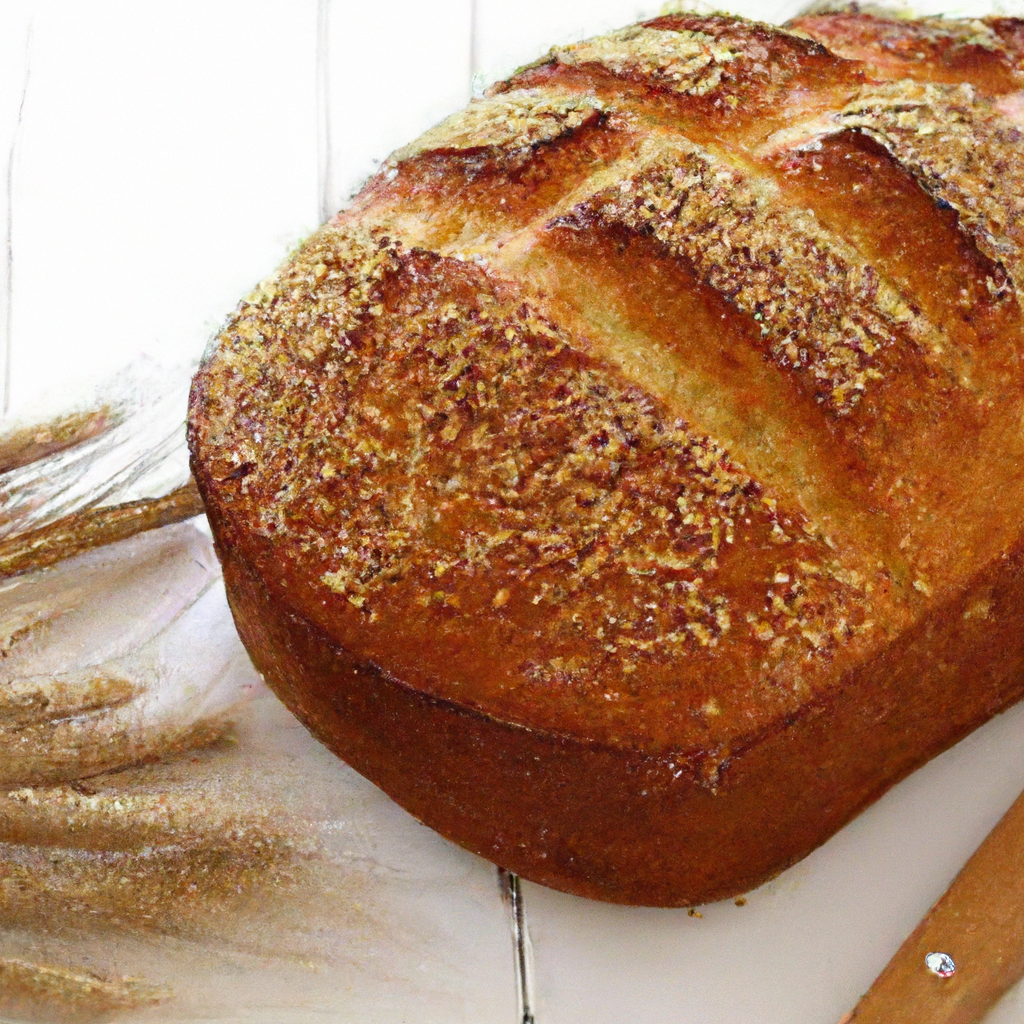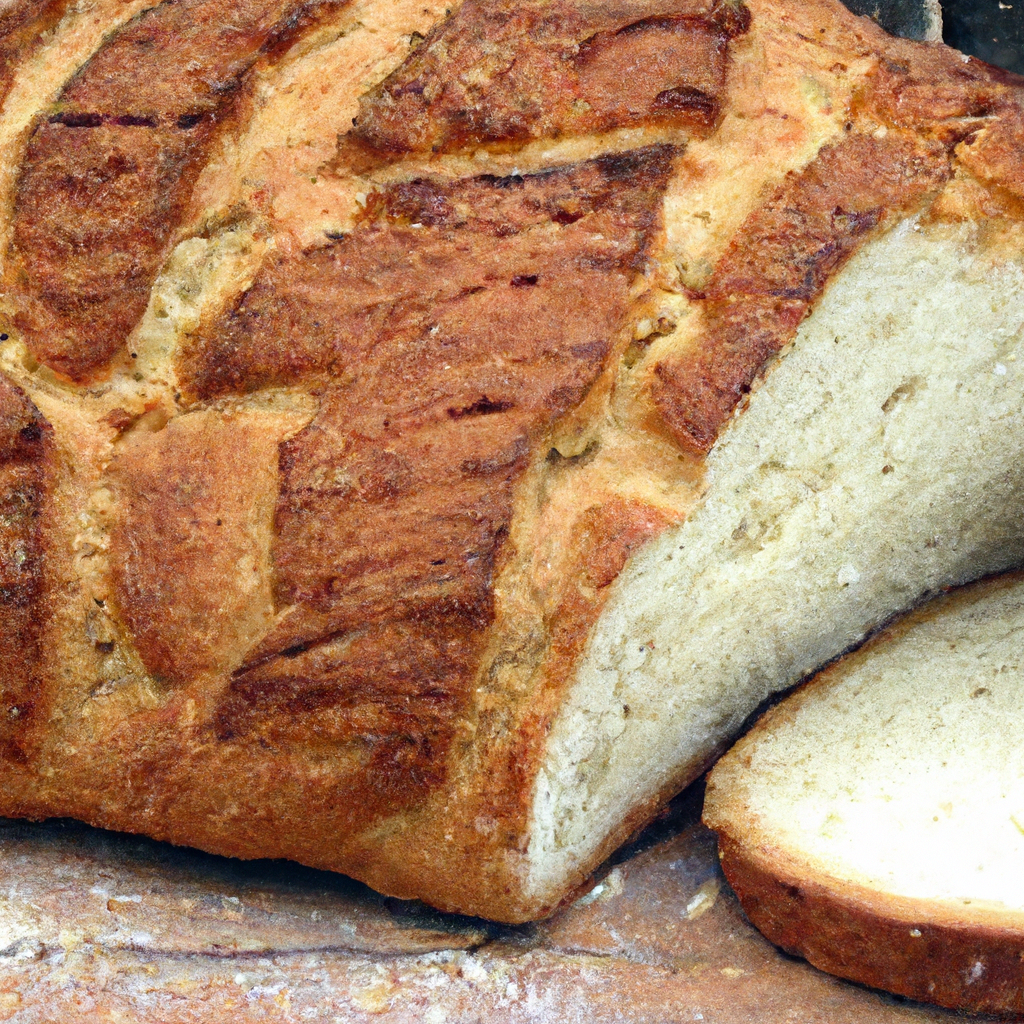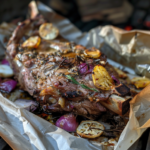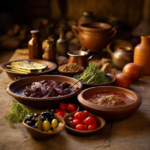Immerse yourself in the rich flavors and mouthwatering history of Greek cuisine as we embark on a delightful journey through the world of bread-making. From the lush regions of Greece, we will unravel the cultural significance and unique flavors of various bread varieties. Amongst these ancient treasures, we will uncover the enduring legacy of Greek Paximadi, a traditional rusk that has stood the test of time. Prepare to be captivated by the tantalizing stories and savory delights that await you in the historical bread varieties of Greek Paximadi.

The History of Greek Paximadi
Ancient Origins
Greek cuisine is a treasure trove of delightful flavors, and the tradition of bread-making sits at its heart. The diversity and richness of Greek breads mirror the country’s lush history and the warmth of its people. One such bread that has withstood the test of time is the Greek Paximadi. This enduring rusk has ancient origins that can be traced back to the times of ancient Greece.
Paximadi, also known as “paximathia” or “rusk,” has been a staple in Greek households for centuries. The ancient Greeks recognized the need for a durable bread that could be stored for long periods, making it a practical solution for long journeys at sea or times of scarcity. The simplicity and durability of Paximadi quickly made it a beloved bread among ancient Greeks.
Evolution of Paximadi
Over time, as Greek civilization evolved, so did the Paximadi. As trade and cultural exchanges flourished, new ingredients and techniques were introduced, giving rise to different variations of this timeless bread.
Ancient recipes traditionally utilized barley as the main ingredient in Paximadi. Barley, being the most abundant grain in Greece, was readily available and provided a distinct flavor and texture to the bread. However, as Greece embraced the cultivation of wheat, Paximadi recipes gradually incorporated this versatile grain, resulting in new and delicious variations of the bread.
Importance in Greek Culture
Paximadi holds a significant place in Greek culture, not only for its historical importance but also for its versatility and widespread usage. The bread is deeply rooted in Greek culinary traditions and continues to be a beloved staple in households across the country.
In addition to its practicality as a long-lasting food item, Paximadi plays a symbolic role in cultural celebrations and gatherings. It is often associated with festivity, abundance, and togetherness. Whether enjoyed during traditional feasts, religious observances, or daily meals, Paximadi brings people together and provides a sense of familiarity and comfort.
Traditional Ingredients and Preparation
Key Ingredients
The traditional ingredients used in the preparation of Paximadi vary depending on the regional preferences and the desired flavor profile. However, there are common ingredients that form the backbone of this ancient bread.
- Barley or Wheat Flour: Barley and wheat flour are the core ingredients of Paximadi. Barley flour provides a rustic and hearty taste, while wheat flour offers a softer and milder flavor. The choice of flour determines the overall character of the bread.
- Water: Water is essential for forming the dough. It hydrates the flour and allows gluten formation, contributing to the structure and texture of the bread.
- Yeast: Yeast acts as a leavening agent, helping the dough rise and develop a light and airy consistency. Different types of yeast can be used, such as fresh yeast or instant yeast, depending on the recipe and personal preference.
- Salt: Salt enhances the flavor of Paximadi, providing a subtle savory note to the bread.
Preparation Methods
The process of making Paximadi involves a series of steps that require skill and patience. The traditional preparation methods have been handed down through generations, ensuring the preservation of this ancient bread-making technique.
- Mixing the Ingredients: The first step involves mixing the flour, yeast, salt, and water to form a cohesive dough. The dough is then kneaded thoroughly until it becomes elastic and smooth.
- Resting and Rising: After kneading, the dough is left to rest and rise in a warm and draft-free environment. This allows the yeast to ferment and release gas, causing the dough to expand.
- Shaping and Cutting: Once the dough has risen, it is divided into smaller portions and shaped into flat rounds or loaves. These rounds or loaves are then cut into slices or chunks, which will later be baked to become the rusks.
- Baking and Drying: The slices or chunks of dough are placed in a preheated oven and baked until they turn golden brown and crisp. After baking, the rusks are taken out and left to dry completely, either in the oven with the residual heat or in the open air.
Regional Variations
Greek Paximadi boasts a wide range of regional variations, each with its own unique characteristics. These variations are a testament to the diverse culinary heritage of Greece and the different ingredients available in each region.
- Crete: In Crete, barley flour is the primary ingredient used to make Paximadi. The bread is often baked twice, resulting in an especially hard and durable rusk.
- Ionian Islands: The Paximadi of the Ionian Islands typically incorporates both wheat and barley flour, giving it a balanced flavor. It is often enjoyed with olive oil and sprinkled with sea salt for an added burst of flavor.
- Peloponnese: The Paximadi from the Peloponnese region is characterized by its use of sesame seeds. The dough is often enriched with sesame oil or tahini, lending a delightful nutty taste to the bread.
- Thessaly: Thessalian Paximadi is known for its round shape and large size. It is usually made with wheat flour and frequently enjoyed with local cheeses and preserves.
- Northern Greece: In Northern Greece, multigrain Paximadi is prevalent. This variation combines a mixture of grains such as wheat, barley, rye, or corn, offering a rich and complex flavor profile.
The Different Types of Greek Paximadi
The evolution of Paximadi has given rise to different types of this beloved Greek bread. Each variation offers a unique taste experience, catering to diverse palates and culinary preferences.
Barley Paximadi
Barley Paximadi, also known as “paximadi horiatiko,” remains deeply rooted in ancient Greek tradition. This rustic variation is made exclusively with barley flour, which provides a hearty and wholesome taste. Barley Paximadi is known for its dense texture and robust flavor, making it a perfect accompaniment to various spreads, dips, or simple olive oil.
Wheat Paximadi
Wheat Paximadi, or “paximadi psistarias,” has gained popularity over the years due to its softer texture and milder flavor. This variation incorporates wheat flour, imparting a delicate and slightly sweet taste to the bread. Wheat Paximadi is versatile and can be enjoyed as a standalone snack or paired with various toppings, such as creamy cheeses, fresh vegetables, or cured meats.
Multigrain Paximadi
Multigrain Paximadi, as the name suggests, combines multiple grains, such as wheat, barley, rye, or corn, to create a unique flavor profile. This variation offers a harmonious blend of textures, ranging from crunchy to chewy, depending on the grains used. Multigrain Paximadi is often packed with nutrients and fiber, making it a nutritious choice for those seeking a wholesome and filling snack.
Sweet Paximadi
While Paximadi is traditionally associated with savory flavors, the Greek culinary landscape has also embraced a sweet counterpart. Sweet Paximadi, or “glyko paximadi,” adds a touch of sweetness to the traditional bread. It is often made with honey, cinnamon, or other sweet spices, resulting in a delightful treat that pairs well with Greek coffee or tea.

Regional Varieties of Greek Paximadi
In addition to the various types of Paximadi, each region in Greece showcases its own unique interpretation of this beloved bread. These regional varieties reflect the distinct culinary traditions and local ingredients found across the country.
Crete
Crete, the largest Greek island, is renowned for its Paximadi. The Cretan version of Paximadi is typically made with barley flour and is known for its durability. It is often baked twice to achieve an especially hard and crunchy texture, allowing the Paximadi to be stored for extended periods without losing its flavor or integrity.
Ionian Islands
The Paximadi found in the Ionian Islands showcases a harmonious blend of wheat and barley flour, resulting in a balanced taste. This variation is often enjoyed with drizzles of extra virgin olive oil and sprinkles of sea salt, perfectly capturing the coastal essence and rich culinary heritage of the Ionian Islands.
Peloponnese
The Peloponnese region boasts a Paximadi that incorporates the beloved flavors of sesame seeds. This variation often features sesame oil or tahini in the dough, imparting a delightful nutty taste to the bread. The Peloponnesian Paximadi is loved for its unique combination of rich flavors and crunchy texture.
Thessaly
Thessaly, located in central Greece, offers its own distinctive version of Paximadi. Thessalian Paximadi is characterized by its round shape and large size. It is typically made with wheat flour and is enjoyed alongside local cheeses, preserves, or even a dollop of honey for a touch of sweetness.
Northern Greece
In Northern Greece, multigrain Paximadi is prevalent and is a testament to the region’s culinary diversity. This variation combines various grains such as wheat, barley, rye, or corn to create a complex and satisfying flavor profile. Northern Greek Paximadi often showcases the region’s commitment to using locally sourced and sustainable ingredients.
Traditional Uses of Greek Paximadi
Dipping Bread
Paximadi is widely used as a dipping bread in Greek cuisine. Its sturdy texture and ability to maintain its shape make it an ideal accompaniment to traditional dips, spreads, and sauces. Whether it’s the classic Tzatziki made with yogurt, cucumber, and garlic, or the smoky Eggplant Dip known as Melitzanosalata, Paximadi’s crunch adds an extra layer of satisfaction to these flavorful concoctions.
Base for Savory Dishes
Paximadi serves as a versatile base for various savory dishes. It can be used as a foundation for “Dakos” – a popular Cretan dish consisting of Paximadi topped with diced tomatoes, crumbled feta cheese, olives, and drizzled with olive oil. The bread soaks up the tomato juices, softening it slightly while retaining its firmness, resulting in a delicious blend of flavors and textures.
Dessert Ingredient
Paximadi even finds its way into Greek desserts with the introduction of “Paximadi Pudding” or “Mosaiko.” This delightful dessert involves soaking Paximadi slices in a flavored syrup, typically made with honey, orange juice, and aromatic spices like cinnamon. The soaked Paximadi is then layered with creamy custard and chocolate to create a luscious and indulgent treat.
Health Benefits and Nutritional Value
High Fiber Content
Paximadi, being a whole-grain bread, is rich in dietary fiber. The use of whole grains retains the bran and germ, which are excellent sources of fiber. A diet high in fiber helps regulate digestion, promotes satiety, and supports overall gut health. Adding Paximadi to your daily diet can contribute to a well-rounded and fiber-rich eating plan.
Low Fat and Cholesterol
Paximadi is a low-fat bread option, making it particularly suitable for those watching their fat intake. The absence of added oils or fats ensures a guilt-free indulgence while still providing a satisfying crunch. Additionally, Paximadi is naturally cholesterol-free, making it a heart-healthy choice for individuals looking to maintain their cardiovascular well-being.
Vitamins and Minerals
Paximadi contains essential vitamins and minerals, contributing to its nutritional value. Whole-grain varieties of Paximadi are particularly rich in B vitamins, such as thiamine and niacin, which play a crucial role in energy production and cellular function. The bread also provides minerals like iron, magnesium, and phosphorus, contributing to overall health and well-being.
Greek Paximadi in Modern Cuisine
Influence on Artisanal Bakeries
The timeless appeal of Greek Paximadi has not gone unnoticed in the modern culinary landscape. Artisanal bakeries have embraced the traditional techniques and flavors of Paximadi, incorporating it into their offerings. These bakeries often focus on handcrafted breads, ensuring the highest quality ingredients and attention to detail. By reviving traditional recipes and techniques, artisanal bakeries are preserving the legacy of Paximadi and introducing it to new generations.
Use in Gourmet Recipes
Greek Paximadi has found its way into gourmet recipes, elevating the humble bread into sophisticated cuisine. Chefs and food enthusiasts are exploring creative ways to incorporate Paximadi into their creations, using it as a unique ingredient in salads, appetizers, and main courses. The crunch and distinctive flavors of Paximadi add depth and texture to a variety of dishes, providing a delightful twist to traditional recipes.
International Popularity
Greek Paximadi’s popularity has transcended borders, gaining recognition beyond the shores of Greece. As the world becomes more aware of the health benefits and unique flavors of ancient grains, Paximadi has caught the attention of health-conscious individuals and food enthusiasts alike. Whether enjoyed as a snack, a gourmet ingredient, or a gluten-free alternative, Paximadi has found its way into pantries around the globe.
Traditional Festivals and Celebrations
Feasts and Religious Observances
Paximadi holds a prominent place in traditional Greek feasts and religious observances. These joyous occasions often involve communal meals, where Paximadi plays a central role. Whether used as a bread for the feast’s main course or dunked into celebratory stews and soups, Paximadi brings people together, fostering a sense of unity and conviviality.
Weddings and Birthdays
In Greek weddings and birthday celebrations, Paximadi takes on a symbolic role. It is often served during these joyous occasions as a representation of abundance and prosperity. Paximadi can be found in beautifully adorned baskets or platters, signifying good wishes for the future and the sharing of good fortune with loved ones.
National Holidays
On national holidays and significant cultural events, Paximadi is an integral part of traditional Greek customs. Whether it’s the Greek Independence Day or Orthodox Easter, Paximadi is present in festive meals, picnics, and religious ceremonies. Its enduring presence underscores the deep-rooted traditions and cultural significance that Paximadi holds within Greek society.
Preserving the Legacy of Greek Paximadi
Traditional Recipes Passed Down
Greek Paximadi owes its continued existence to the efforts of families who have passed down their knowledge and recipes from generation to generation. This oral tradition ensures that the art of making Paximadi remains alive and that the bread remains a cherished part of Greek culinary heritage. By sharing their expertise and maintaining the authenticity of the recipes, families contribute to the preservation of this ancient bread.
Efforts to Maintain Authenticity
In recent years, there has been a resurgence in traditional Greek culinary practices, including the production of Paximadi. Efforts have been made to utilize locally sourced ingredients, such as heirloom grains, and to employ traditional baking techniques. By prioritizing authenticity and quality, these initiatives aim to safeguard the legacy of Paximadi and provide consumers with an authentic and culturally significant product.
Promotion of Local Economy
The production and consumption of Greek Paximadi can help support local economies, especially in rural areas where traditional agriculture and baking practices are still prominent. By purchasing Paximadi made from local ingredients and supporting small-scale producers, individuals contribute to the economic sustainability of these regions and help preserve the cultural heritage associated with Paximadi.
Conclusion
Greek Paximadi stands as a testament to the enduring legacy of bread-making in Greek culture. From its ancient origins to its modern culinary transformations, Paximadi has remained a constant presence in the lives of Greeks, symbolizing abundance, togetherness, and tradition. With its various types and regional variations, Paximadi continues to captivate palates around the world, offering a combination of flavors, textures, and cultural history worth savoring. As we celebrate the rich culinary tapestry of Greece, let us pay homage to the remarkable history and cultural significance of Greek Paximadi.
Unlock the Delicious World of Greek Paximadi: A Culinary Adventure
Journey through the delightful flavors of Greece with an exploration of Paximadi, the traditional Greek twice-baked bread. This culinary escapade is proudly sponsored by Digital Heroes Caffe [https://digitalheroescaffe.com] and Financial Navigator 360 [https://finnav360.news], your trusted partners in the digital and financial realms.
Dive into the world of Paximadi with these mouthwatering resources and recipes:
- Classic Paximadi Recipe: Begin your Paximadi adventure with the classic recipe that has been cherished for generations. Learn how to create this hearty, crunchy delight at home.
- Paximadi with Tzatziki: Elevate your Paximadi experience by pairing it with creamy, garlicky tzatziki sauce. This combination is a taste of Greek perfection.
- Paximadi and Tomato Salad: Explore a fresh twist on Paximadi with a tomato and red onion salad. The crispy bread provides the ideal crunch for this Mediterranean-inspired dish.
- Sweet Paximadi with Honey and Nuts: Indulge your sweet tooth with sweet Paximadi drizzled with honey and sprinkled with nuts. A delightful treat that’s both crunchy and sweet.
Enhance your Greek culinary journey with these valuable resources:
- Greek Mezes Recipe: https://cookingwithgreekpeople.com/exploring-traditional-greek-meze-appetizers/
- Dolmades: https://cookingwithgreekpeople.com/dolmadakia-greek-stuffed-vine-leaves/
- YouTube Chef on a Bike: https://www.youtube.com/@CookingwithGreekPeople
Immerse yourself in the world of Paximadi, where tradition meets taste. These resources and recipes will be your trusted guides as you embark on this culinary adventure.


















